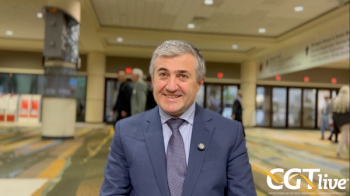
Tackling Storage and Logistical Challenges in Cell Therapy
The chief executive officer of Gamida Cell discussed upcoming research on 2 of their investigational agents, GDA-201 and omidubicel, for hematological malignancies.
“We've had to develop a unique process and a unique cryo buffer that allows us to freeze natural killer cells and recover greater than 90% of those cells. So, the new GDA-201 cryo-preserved is now going to be an off-the-shelf product and we're going to reinstitute a multicenter study in lymphoma to include both histologies of follicular lymphoma and diffuse large B cell lymphoma.”
While cell therapy strategies can be an effective treatment for relapsed or refractory lymphomas, there is still much to be improved when it comes to the production and logistics associated with these therapies. One such company focused on these improvements is Gamida Cell, who recently instituted a new process to improve the stability of 1 of their investigational agents, GDA-201, for the treatment of follicular and diffuse large B cell lymphomas.
GeneTherapyLive spoke with Julian Adams, PhD, chief executive officer, Gamida Cell, to learn more about research efforts surrounding GDA-201, including details of the cryo buffer that the company developed in order to efficiently freeze and recover the GDA-201 cells, and also discussed the company’s future studies of omidubicel (Nicord) for the treatment of hematological malignancies.
Results from a phase 3 study of omidubicel (NCT02730299) recently presented at the Virtual 47th Annual Meeting of the European Society for Blood and Marrow Transplantation showed that the treatment was associated with a significantly improved median time to neutrophil engraftment compared with standard umbilical cord blood transplantation in patients with high-risk hematologic malignancies.
REFERENCE
Sanz GF, Stiff PJ, Cutler CS, et al. Results of a phase III randomized, multicenter study comparing omidubicel with standard umbilical cord blood transplantation (UCBT) in patients with high-risk hematologic malignancies following myeloablation. Presented at: 47th Annual Meeting of the EBMT; March 14-17, 2021; Virtual. Abstract GS2-7.
Newsletter
Stay at the forefront of cutting-edge science with CGT—your direct line to expert insights, breakthrough data, and real-time coverage of the latest advancements in cell and gene therapy.

















































